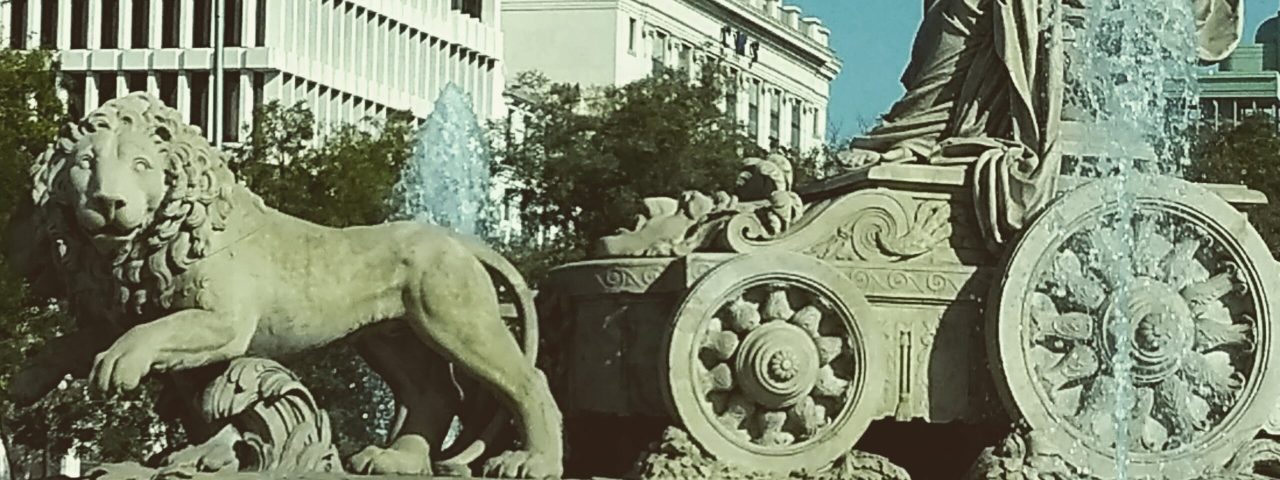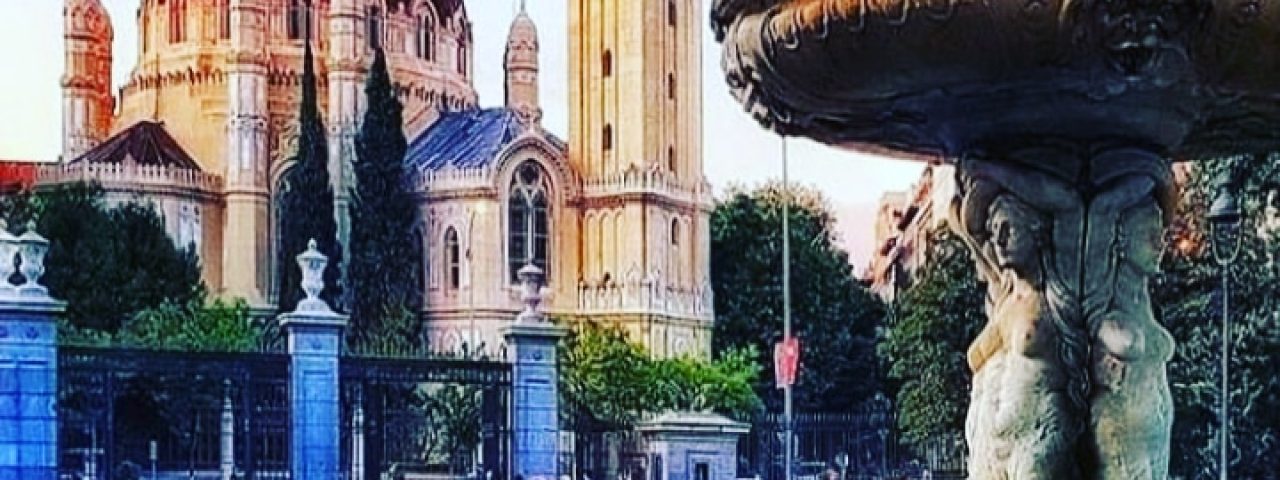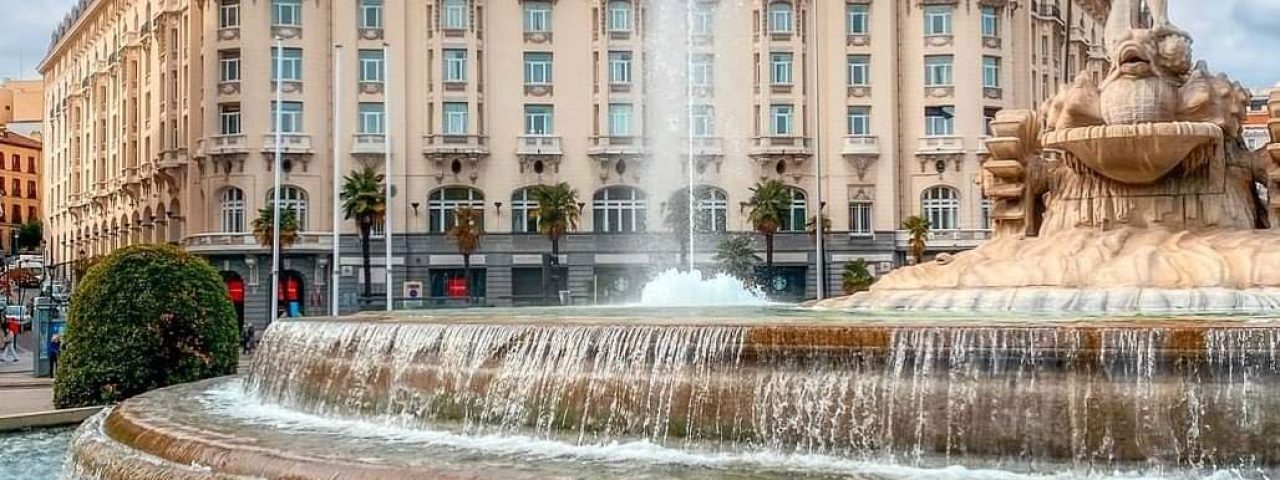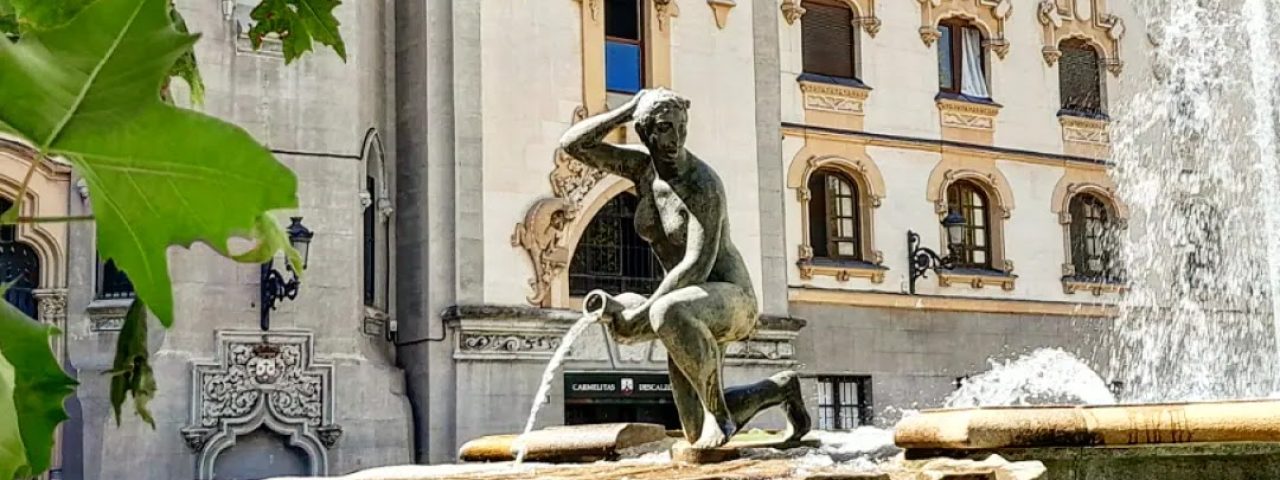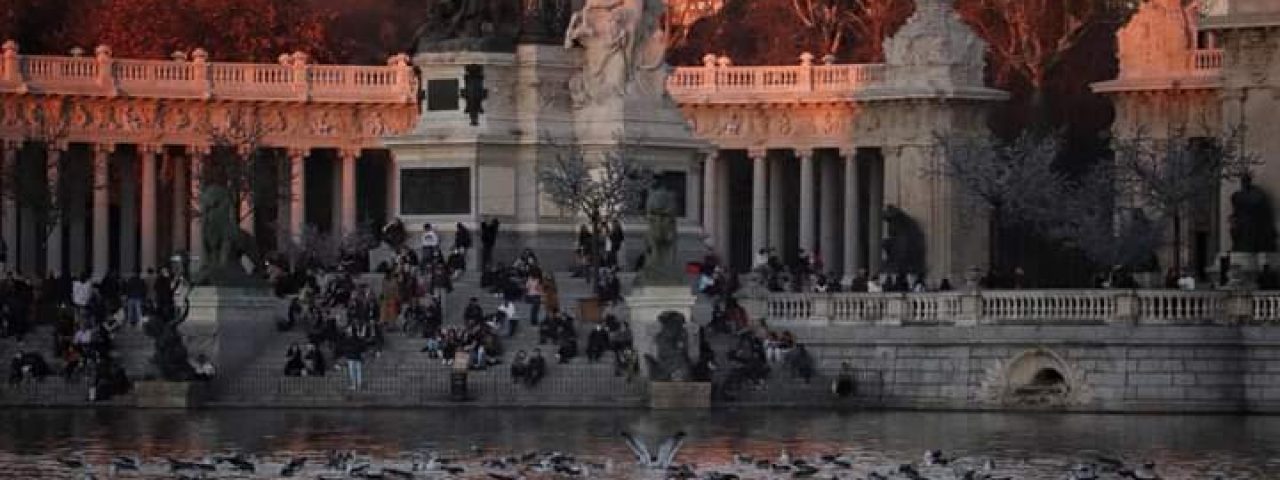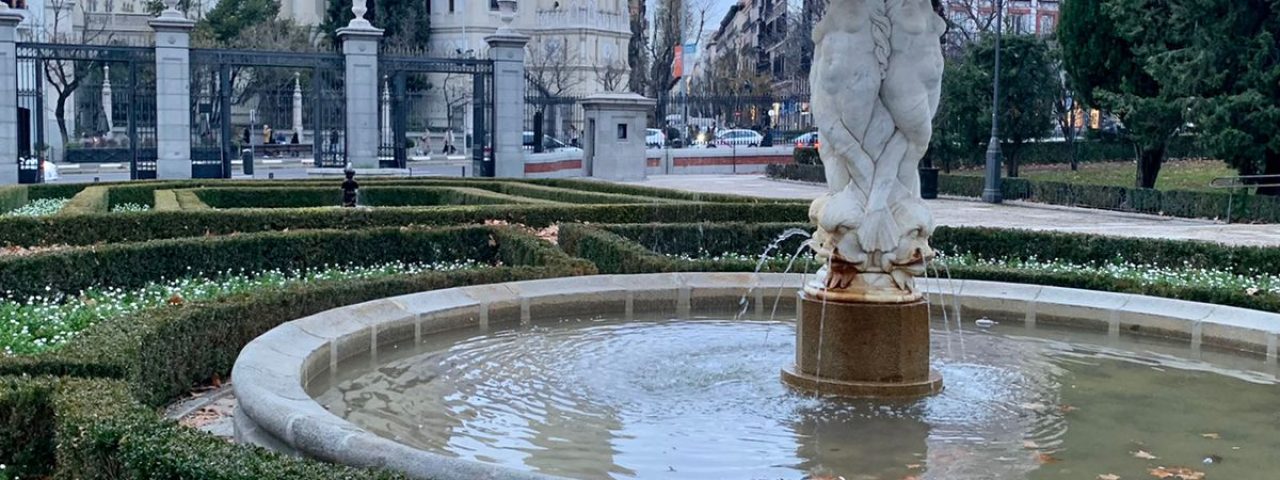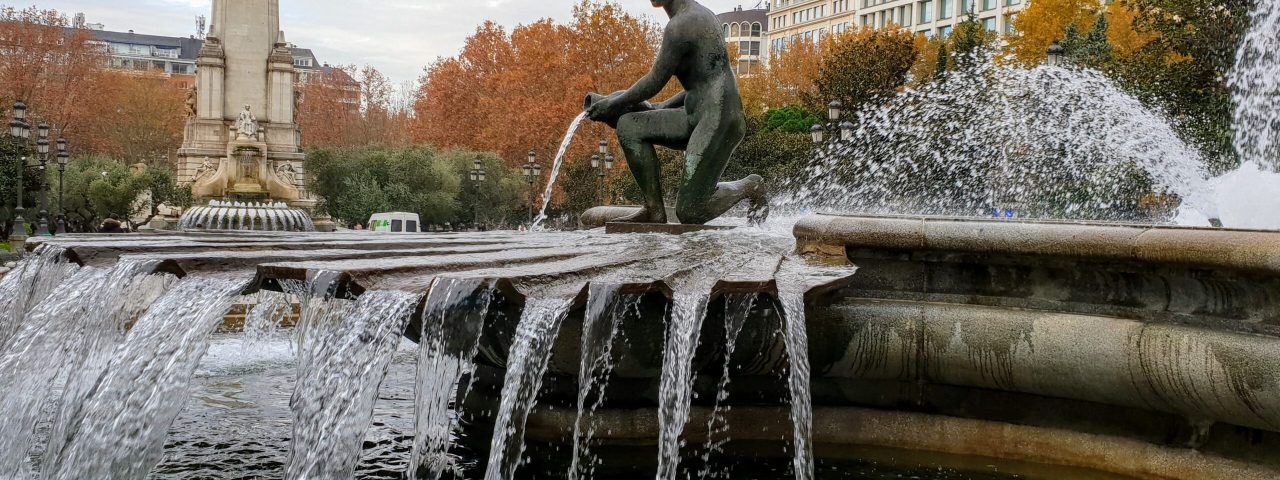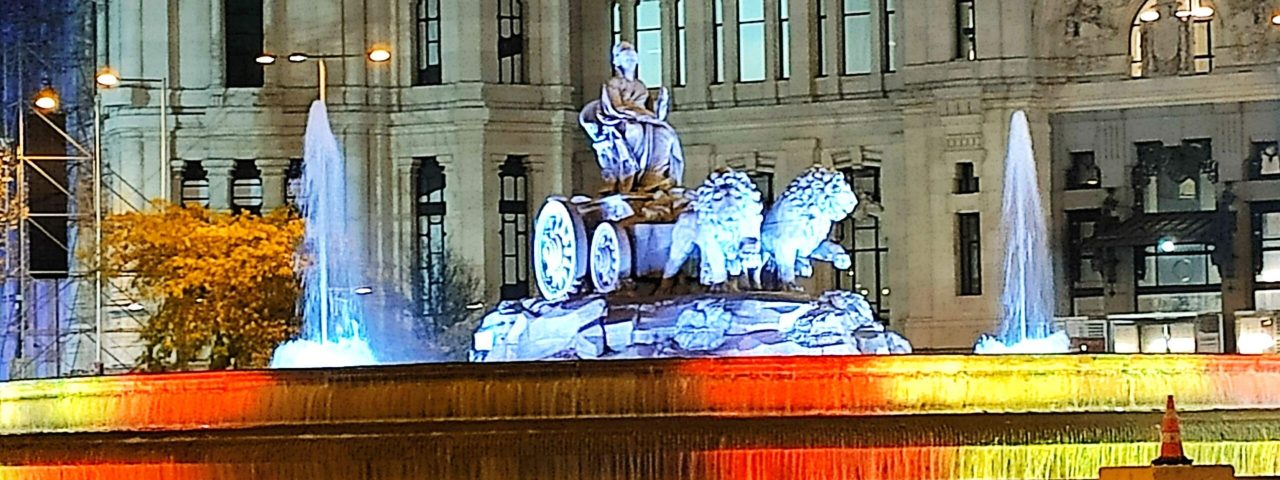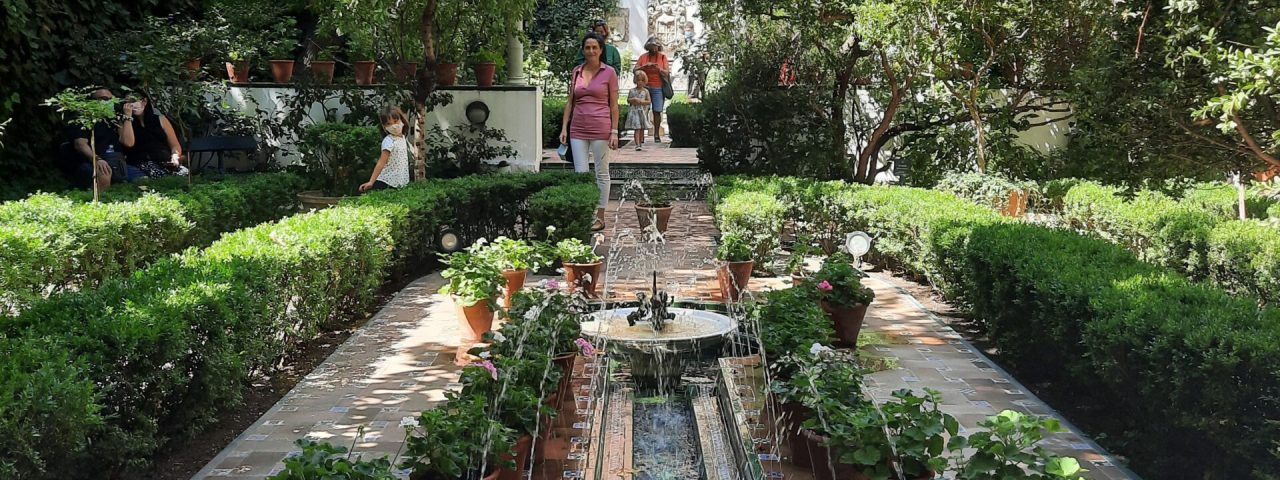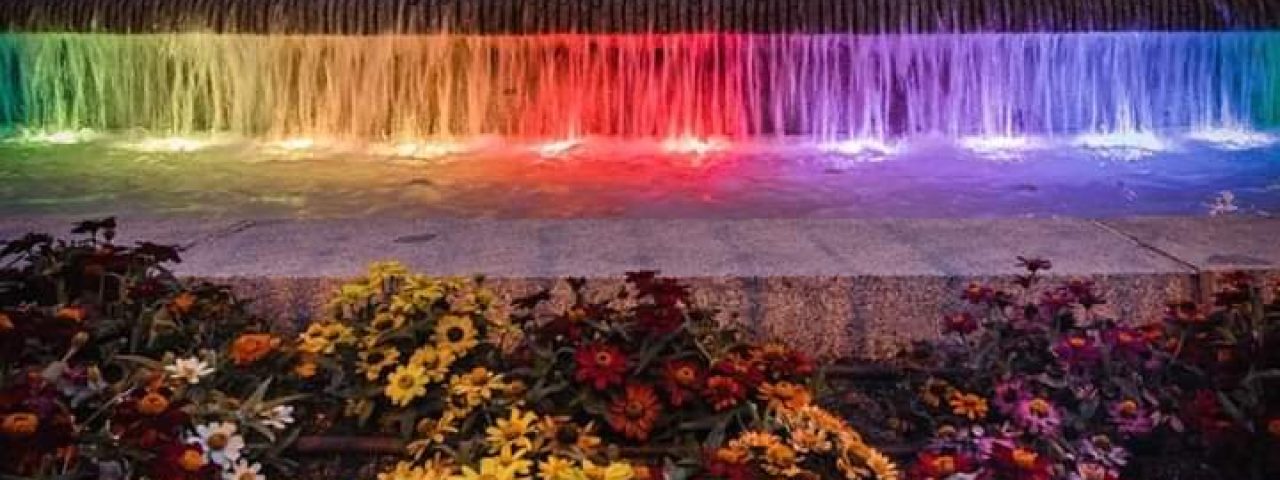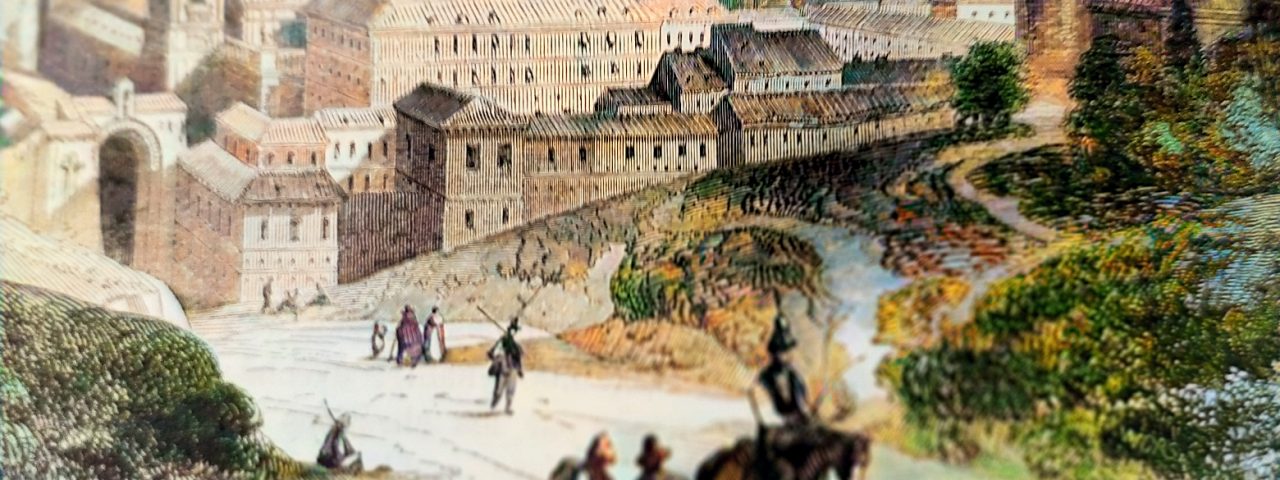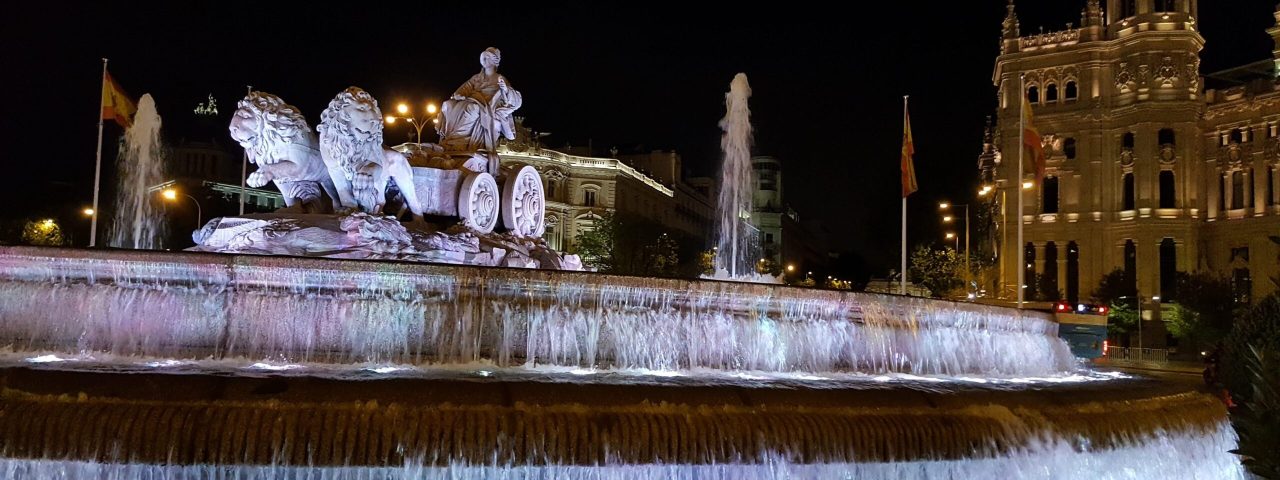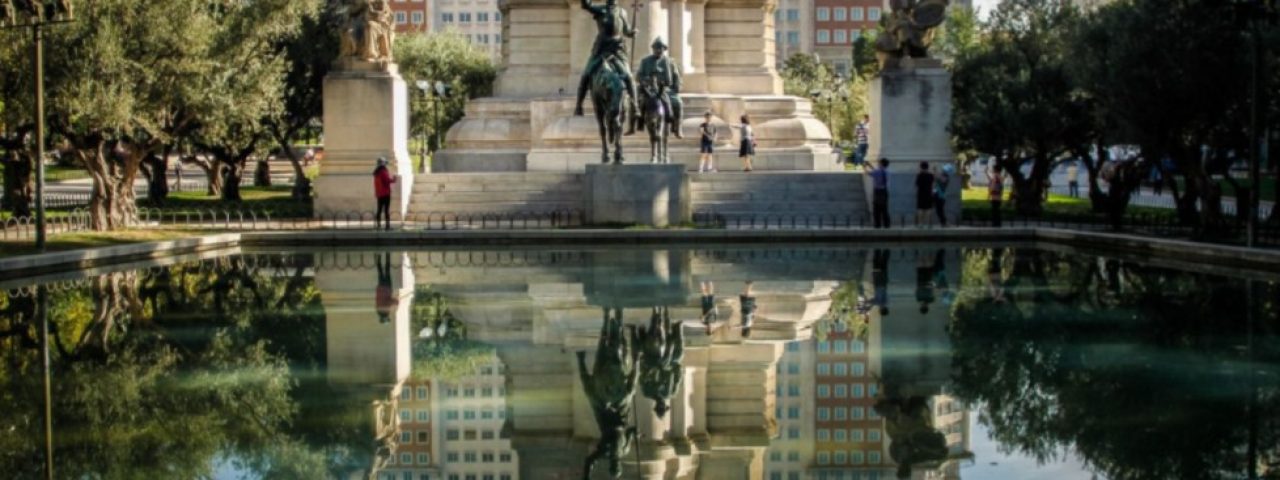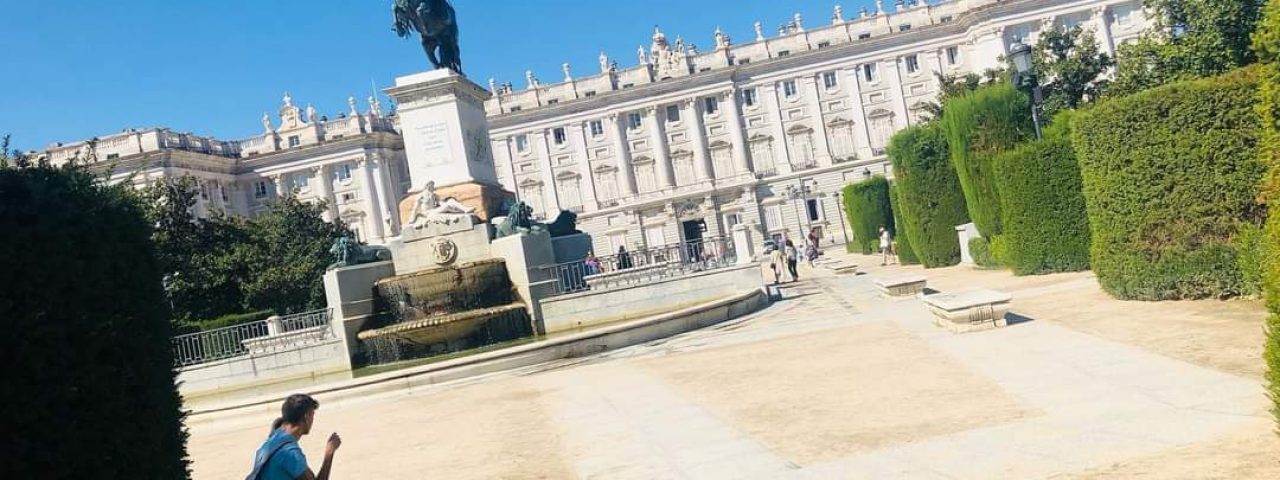:::::Quick overview:::::
The Community of Madrid stands as Spain’s undisputed economic powerhouse and cultural epicenter, making it an exceptional destination for both tourists and event organizers seeking world-class venues and experiences. Madrid’s economy is a fundamental driver of the Spanish economy, showing significant dynamism in recent years, with the region offering an unmatched combination of historical grandeur, modern sophistication, and strategic accessibility that positions it as Europe’s premier destination for international events and tourism.
For event organizers, Madrid presents an irresistible proposition: a cosmopolitan hub with cutting-edge infrastructure, world-renowned venues ranging from the iconic Santiago Bernabéu Stadium to the state-of-the-art IFEMA convention center, all supported by excellent transportation links including Adolfo Suárez Madrid-Barajas Airport, one of Europe’s busiest international gateways. The region’s central location within the Iberian Peninsula makes it the perfect launching point for exploring all of Spain, while its concentration of luxury hotels, Michelin-starred restaurants, and cultural attractions ensures that attendees will have unforgettable experiences beyond scheduled events.
Tourists will find themselves enchanted by Madrid’s unique blend of royal heritage and contemporary vibrancy, where centuries-old palaces stand alongside world-class museums like the Prado, Reina Sofía, and Thyssen-Bornemisza, forming the famous “Golden Triangle of Art.” The region offers everything from the bustling energy of Gran Vía and Puerta del Sol to the tranquil beauty of El Retiro Park and the charming historic towns scattered throughout the Community, such as Alcalá de Henares and Aranjuez, both UNESCO World Heritage sites.
The Community of Madrid’s appeal extends far beyond its capital city, encompassing diverse landscapes from the Sierra de Guadarrama mountains perfect for outdoor adventures to charming medieval towns that preserve Spain’s rich cultural heritage. With over 300 sunny days per year, a thriving culinary scene that ranges from traditional tapas bars to innovative fine dining, and a nightlife that’s legendary throughout Europe, Madrid offers an unparalleled quality of life and visitor experience that makes every stay memorable and every event a resounding success.
:::::Geographical Location and Climate:::::
The Community of Madrid occupies a strategic position at the geographical heart of Spain, situated on the elevated Meseta Central plateau approximately 650 meters above sea level. This autonomous community covers 8,028 square kilometers in the center of the Iberian Peninsula, making it one of Spain’s smaller regions by area but maximizing its influence through its central location. The region is landlocked and bordered by the communities of Castile and León to the north and west, and Castile-La Mancha to the south and east, positioning it as the natural crossroads of Spain with excellent connectivity to all major Spanish cities and regions.
The landscape of Madrid is remarkably diverse despite its inland location, featuring the dramatic Sierra de Guadarrama mountain range to the northwest, which includes peaks reaching over 2,400 meters and offers excellent skiing, hiking, and outdoor recreation opportunities. The Manzanares River flows through the region from north to south, creating fertile valleys and providing the natural setting for the capital city’s development. The southern and eastern areas of the community feature gently rolling plains and agricultural lands, while the central area around Madrid city is characterized by urban development interspersed with parks and green spaces like the Casa de Campo, one of Europe’s largest urban parks.
Madrid enjoys a continental Mediterranean climate characterized by hot, dry summers and cool winters, with the altitude moderating what would otherwise be more extreme temperatures. Summer temperatures typically range from 25-35°C (77-95°F), while winters are mild with temperatures rarely dropping below freezing, usually ranging from 5-15°C (41-59°F). The region receives over 300 days of sunshine annually, making it one of Europe’s sunniest capitals, with most rainfall occurring in autumn and spring. This climate pattern creates distinct seasons that each offer their own attractions for visitors.
The best times to visit Madrid are during spring (March-May) and autumn (September-November), when temperatures are comfortable for walking and outdoor activities, ranging from 15-25°C (59-77°F). These seasons offer perfect weather for exploring the city’s numerous parks, outdoor terraces, and historic neighborhoods. Summer can be quite warm but is ideal for those who enjoy long, sunny days and the vibrant outdoor culture of Madrid’s many plazas and terraces, while winter offers fewer crowds, lower prices, and the charm of Madrid’s famous Christmas markets and cultural season when theaters and concert halls are at their most active.
:::::History and Culture:::::
The Community of Madrid boasts a rich and layered history that spans over a millennium, beginning with its origins as a Moorish settlement called “Mayrit” established in the 9th century as a fortress to defend Toledo. The region’s strategic location made it a coveted prize during the Reconquista, and it was conquered by Christian forces in 1085 under Alfonso VI. However, Madrid’s true historical significance began in 1561 when King Philip II made it the permanent capital of the Spanish Empire, transforming a modest medieval town into the seat of one of the world’s most powerful kingdoms. This decision shaped not only Madrid’s destiny but that of the entire Community, as the region became the political, cultural, and administrative heart of Spain and its vast overseas territories.
The Habsburg and Bourbon dynasties left an indelible mark on Madrid’s cultural landscape, commissioning magnificent palaces, churches, and public spaces that define the city’s architectural heritage today. The 18th century brought the Enlightenment to Madrid under the Bourbon kings, particularly Charles III, known as “the best mayor Madrid ever had,” who modernized the city with wide boulevards, museums, and parks. The region witnessed pivotal moments in Spanish history, including Napoleon’s occupation (1808-1814), which sparked the Peninsular War, and the Spanish Civil War (1936-1939), during which Madrid became a symbol of republican resistance. The transition to democracy after Franco’s death in 1975 saw Madrid emerge as a modern European capital, hosting events like the 1992 Capital European Culture designation and becoming a vibrant center of contemporary Spanish culture.
Madrid’s cultural identity is deeply rooted in its role as the meeting point of diverse Spanish regional traditions, creating a unique Castilian culture that embraces both tradition and innovation. The region is famous for its passionate approach to life, embodied in the concept of “la movida madrileña,” the cultural renaissance that emerged in the 1980s, transforming Madrid into one of Europe’s most dynamic cultural scenes. Traditional festivals like San Isidro (May 15th), the patron saint celebration featuring traditional dress, dancing, and outdoor festivities in the Pradera de San Isidro, showcase the region’s folk heritage, while contemporary events like the Festival de Otoño and Suma Flamenca highlight Madrid’s commitment to both preserving and evolving its cultural traditions.
The cultural calendar in Madrid is extraordinarily rich, featuring world-renowned events such as the ARCOmadrid international art fair, the Festival Internacional de Jazz de Madrid, and the Noche en Blanco when museums and cultural sites remain open throughout the night. The region’s literary heritage is particularly significant, with Madrid serving as the backdrop for works by Miguel de Cervantes, Lope de Vega, and other Golden Age writers, while the famous Barrio de las Letras (Literary Quarter) preserves the memory of Spain’s greatest authors. Local customs include the tradition of the evening paseo (stroll), the late dining culture with dinner typically served after 9 PM, and the vibrant terrace culture where locals gather in plazas and sidewalk cafes to socialize, creating an atmosphere that seamlessly blends historical tradition with contemporary European lifestyle.
:::::Architecture and Attractions:::::
The Community of Madrid showcases an extraordinary architectural heritage that spans from medieval Mudéjar to cutting-edge contemporary design, creating one of Europe’s most diverse and impressive urban landscapes. The Habsburg Madrid features magnificent examples of Spanish Golden Age architecture, including the Plaza Mayor (1617-1619), a perfectly proportioned rectangular square surrounded by red-painted buildings with distinctive spire-topped towers, and the Royal Palace of Madrid, an 18th-century Baroque masterpiece with over 3,400 rooms that rivals Versailles in its grandeur. The Bourbon influence is evident in neoclassical gems like the Prado Museum building, designed by Juan de Villanueva, and the Puerta de Alcalá, an iconic triumphal arch that has become one of Madrid’s most recognizable symbols. Modern architecture is equally prominent, with contemporary landmarks like the Cuatro Torres Business Area skyscrapers, the stunning CaixaForum cultural center by Herzog & de Meuron, and the futuristic Terminal 4 of Barajas Airport by Richard Rogers and Antonio Lamela.
The region’s crown jewel attractions center around the world-famous “Golden Triangle of Art,” comprising three of the world’s most important museums within walking distance of each other. The Prado Museum houses the world’s finest collection of Spanish painting, including masterpieces by Velázquez, Goya, and El Greco, while the Reina Sofía Museum showcases modern and contemporary art, most notably Picasso’s iconic “Guernica.” The Thyssen-Bornemisza Museum complements these collections with works spanning from medieval to contemporary art, together forming an unparalleled artistic experience. Beyond the museums, the expansive Retiro Park offers 125 hectares of gardens, monuments, and recreational spaces, including the stunning Palacio de Cristal (Crystal Palace), a 19th-century iron and glass pavilion that hosts contemporary art exhibitions.
Religious architecture in Madrid demonstrates the region’s spiritual heritage through magnificent structures like the Almudena Cathedral, a neo-Gothic cathedral completed in 1993 that serves as the seat of the Archbishop of Madrid, and the Basilica of San Francisco el Grande, featuring one of the largest domes in Spain. The region extends beyond Madrid city to include UNESCO World Heritage sites like the University and Historic Precinct of Alcalá de Henares, birthplace of Miguel de Cervantes and home to one of Europe’s oldest universities, and the Cultural Landscape of Aranjuez with its magnificent Royal Palace and gardens that exemplify the relationship between humanity and nature in royal landscape design.
Throughout the Community of Madrid, visitors can explore an incredible diversity of attractions, from the medieval walls and castle of Buitrago del Lozoya in the Sierra Norte to the impressive monastery-palace of El Escorial, Philip II’s austere monument to Spanish power and Catholic faith. The region also offers unique modern attractions like the Madrid Teleférico cable car system providing panoramic views of the city, the sophisticated shopping and entertainment complex of Las Rozas Village, and the beautiful natural spaces of the Sierra de Guadarrama National Park, where visitors can experience mountain landscapes, traditional villages, and outdoor adventures just minutes from the bustling capital. Notable parks and green spaces include the vast Casa de Campo, the elegant Botanical Garden, and the romantic Quinta de los Molinos with its spectacular almond blossoms in spring.
:::::Economy and Key Industries:::::
Madrid has both the largest nominal GDP among Spanish autonomous communities, making the Community of Madrid the undisputed economic engine of Spain and one of Europe’s most dynamic regional economies. Madrid’s GDP grew by 3.4% in 2024 (3.2% in Spain) and could increase by 2.9% in 2024 and 2.1% in 2025, which would allow the creation of 183,000 new jobs in the region over the biennium. The region’s economy is highly diversified and service-oriented, with the service sector accounting for approximately 85% of GDP, driven by its role as Spain’s financial, political, and business capital. Major multinational corporations maintain their Spanish headquarters in Madrid, while the city serves as the Iberian Peninsula’s gateway for international business, benefiting from excellent transportation links and a highly educated workforce.
The financial services sector represents one of Madrid’s most important economic pillars, housing the Spanish stock exchange (Bolsa de Madrid), major Spanish banks including Banco Santander and BBVA, and numerous international financial institutions. The technology and telecommunications sectors have experienced remarkable growth, with Madrid becoming a major European tech hub attracting startups, multinational tech companies, and significant venture capital investment. The aerospace and defense industries are also prominent, with companies like Airbus, Indra, and CASA having significant operations in the region. Madrid offers zero wealth tax, near to zero inheritance tax, tax breaks for self-employed workers (autónomos) and deductions for families and births. They also offer some of the lowest personal income tax rates in Spain, and deductions for new companies and startups, making it an attractive destination for entrepreneurs and businesses.
Tourism represents another crucial economic driver, with Madrid welcoming over 10 million international visitors annually and generating billions in revenue through hospitality, retail, and cultural activities. The construction and real estate sectors have shown remarkable dynamism, with over 600 new housing developments accounting for 23% of the national market for new construction, followed by Malaga and Barcelona. More than 300 projects are underway in the capital alone. The logistics and transportation industries benefit enormously from Madrid’s central geographical position, with the region serving as Spain’s primary distribution hub for goods moving throughout the Iberian Peninsula and to Latin America.
Unique local products and businesses reflect Madrid’s blend of tradition and innovation, including world-renowned fashion brands, artisanal food producers specializing in Iberian ham, Manchego cheese, and wines from nearby denominations of origin, and a thriving creative industries sector encompassing film production, advertising, design, and digital media. The region is also home to major publishing houses, making Madrid the center of Spanish-language literature and media production. Traditional crafts such as Toledo steel work, ceramics, and leather goods continue to thrive alongside modern industries, while the growing green economy sector focuses on renewable energy, sustainable urban development, and environmental technologies, positioning Madrid as a leader in Spain’s transition toward sustainability.
:::::Local Cuisine:::::
Madrid’s culinary scene represents a magnificent fusion of traditional Castilian cuisine with innovative contemporary gastronomy, creating one of Europe’s most exciting food destinations. The region’s signature dish is cocido madrileño, a hearty three-course chickpea stew with meat, vegetables, and noodles that reflects the substantial, warming food preferred in Spain’s high-altitude capital. Traditional Madrid cuisine emphasizes quality ingredients and simple preparation methods, featuring specialties like callos a la madrileña (tripe stew), soldaditos de Pavía (battered and fried cod), huevos estrellados (fried eggs with potatoes and ham), and the famous bocadillo de calamares (fried squid sandwich) traditionally eaten standing at bars near the Plaza Mayor. The region’s position at the center of Spain means that the finest products from across the country converge in Madrid’s markets and restaurants, from Iberian ham from Extremadura to seafood from the Atlantic and Mediterranean coasts.
The tapas culture in Madrid is legendary, with traditional taverns and modern tapas bars offering everything from simple olives and anchovies to sophisticated small plates created by world-renowned chefs. The city’s bar-hopping tradition, known as “ir de tapas,” involves moving from establishment to establishment, sampling different specialties with each drink. Regional wines include excellent selections from nearby denominaciones de origen such as Vinos de Madrid DO, which produces fresh whites and robust reds from vineyards in the Community’s three sub-regions. The sweet tradition includes rosquillas (ring-shaped pastries) particularly popular during San Isidro festival, torrijas (Spanish French toast) eaten during Easter, and churros con chocolate, the beloved fried dough sticks served with thick hot chocolate that originated in Madrid.
Madrid’s restaurant scene has evolved dramatically, now boasting numerous Michelin-starred establishments alongside traditional casas de comidas (family restaurants) that have served the same recipes for generations. The Mercado de San Miguel, a beautifully restored 20th-century iron and glass market, offers gourmet foods and wines in an elegant setting, while the Mercado de la Paz in the Salamanca district provides access to the finest ingredients from across Spain. Food festivals throughout the year celebrate everything from the Madrid Restaurant Week to specialized events focusing on specific ingredients or culinary traditions, creating opportunities for visitors to experience both traditional and contemporary Spanish cuisine.
The region’s contemporary culinary innovation is exemplified by restaurants like DiverXO (three Michelin stars) and other establishments that blend Spanish traditions with international influences and modern techniques. The growing focus on sustainable and local ingredients has led to an increased appreciation for products from the Community of Madrid itself, including vegetables from the fertile river valleys, game from the Sierra mountains, and artisanal products from small producers throughout the region. The vibrant food scene extends to the numerous food trucks, pop-up restaurants, and gastronomic markets that have emerged throughout the city, ensuring that visitors can experience Madrid’s culinary diversity at every level, from street food to haute cuisine, making the Community of Madrid a true paradise for food lovers.
:::::Transportation and Accessibility:::::
Madrid’s exceptional accessibility makes it one of Europe’s most connected cities, with the Adolfo Suárez Madrid-Barajas Airport serving as the primary gateway and ranking among the world’s busiest airports with over 50 million passengers annually. The airport features four terminals connected by efficient shuttle services and the Metro Line 8, providing direct access to central Madrid in approximately 30 minutes. Barajas Airport offers direct flights to over 170 destinations worldwide, including extensive connections to Latin America, making Madrid the preferred European hub for transatlantic business and leisure travel. High-speed rail connections through the Atocha and Chamartín stations link Madrid to major Spanish cities like Barcelona (2.5 hours), Seville (2.5 hours), Valencia (1.5 hours), and international destinations including Paris and Lisbon, while conventional rail services connect to smaller cities throughout Spain.
The Community of Madrid boasts one of Europe’s most comprehensive and efficient public transportation systems, centered around the Madrid Metro, which operates 13 lines covering over 290 kilometers and serving 302 stations throughout the metropolitan area. The metro system integrates seamlessly with an extensive bus network operated by EMT Madrid, featuring over 200 routes including night buses (búhos) that ensure 24-hour coverage. The Cercanías commuter rail system connects Madrid city with surrounding municipalities and popular destinations like El Escorial, Alcalá de Henares, and Aranjuez, making regional exploration convenient and affordable. A unified ticketing system allows travelers to use the same transport card (Tarjeta Multi) across all public transport modes, while tourist travel passes offer unlimited access to all services for periods ranging from one day to one month.
Road accessibility is equally impressive, with Madrid serving as the center of Spain’s radial highway system, where six major autopistas (highways) converge, connecting the capital to all corners of the country. The M-30 and M-40 ring roads facilitate movement around the metropolitan area, while the comprehensive network of urban roads and avenues ensures efficient internal circulation. For international visitors, car rental services are widely available at the airport and throughout the city, though the excellent public transportation system often makes car rental unnecessary for urban exploration. The region has also embraced sustainable transportation with an expanding network of bicycle lanes, bike-sharing systems like BiciMAD, and electric scooter services that provide environmentally friendly alternatives for short-distance travel.
Madrid’s commitment to accessibility extends to individuals with mobility challenges, with most metro stations, buses, and major attractions featuring wheelchair accessibility and other accommodations. The city’s relatively compact historic center makes many attractions easily walkable, while the flat terrain in central areas facilitates pedestrian movement. Taxi services, including traditional taxis and ride-sharing apps like Uber and Cabify, provide convenient door-to-door transportation, while the recent introduction of electric taxi initiatives demonstrates the city’s commitment to sustainable urban mobility. The combination of world-class airport facilities, comprehensive public transportation, and multiple ground-based alternatives ensures that reaching and moving around the Community of Madrid is convenient, efficient, and suitable for all types of travelers and event attendees.
:::::Event Opportunities and Venues:::::
The Community of Madrid offers world-class event venues that cater to every type of gathering, from intimate corporate meetings to massive international conventions and cultural spectacles. IFEMA Madrid stands as Spain’s premier exhibition and conference center, covering over 200,000 square meters of exhibition space across multiple pavilions, hosting major international events like FITUR (tourism fair), Mercedes-Benz Fashion Week Madrid, and countless trade shows that attract millions of visitors annually. The newly renovated WiZink Center serves as Madrid’s primary indoor arena for concerts and sporting events with a capacity of 17,000, while the legendary Santiago Bernabéu Stadium, home to Real Madrid, offers unique event opportunities in one of the world’s most iconic sporting venues. For prestigious corporate events, the Palacio Municipal de Congresos provides elegant spaces with state-of-the-art technology, while the historic Círculo de Bellas Artes offers stunning rooftop terraces with panoramic city views for exclusive receptions.
The region’s annual events calendar is packed with internationally significant festivals and conventions that demonstrate Madrid’s capacity to host large-scale gatherings. The San Isidro Festival in May transforms the city into a celebration of traditional Spanish culture with street performances, concerts, and outdoor festivities that attract hundreds of thousands of participants. ARCOmadrid, the international contemporary art fair held each February, brings together galleries, collectors, and art enthusiasts from around the world, while the Festival de Otoño presents cutting-edge theater, dance, and music performances throughout the fall. The Madrid Pride celebration, one of Europe’s largest LGBTQ+ events, showcases the city’s inclusive spirit and organizational capabilities, while cultural events like the Noche en Blanco and the Festival Internacional de Jazz demonstrate Madrid’s commitment to accessible, high-quality cultural programming.
Unique venue options extend far beyond conventional spaces, with historic palaces like the Palacio de Cibeles (former Post Office headquarters) offering magnificent halls for gala dinners and awards ceremonies, while venues like the Matadero Madrid cultural center provide contemporary spaces for creative events and product launches. The Real Academia de Bellas Artes de San Fernando offers prestigious settings for academic conferences and cultural events, while outdoor venues like the Retiro Park’s Palacio de Cristal create magical settings for special occasions. The region also features numerous luxury hotels with comprehensive event facilities, including the Hotel Ritz Madrid, Villa Magna, and the Westin Palace, all providing world-class catering, technical support, and accommodation services that meet international standards for luxury events.
The Community extends beyond Madrid city to offer unique venues like the UNESCO World Heritage site of El Escorial for truly memorable corporate retreats or cultural events, while the Palace of Aranjuez provides royal settings for exclusive gatherings. Modern conference centers in suburban locations like Las Rozas and Alcobendas offer alternatives to city-center venues with ample parking and contemporary facilities. The region’s excellent transportation infrastructure ensures that attendees can easily access any venue, while the concentration of luxury accommodations, from boutique hotels in the historic center to resort-style properties in the Sierra mountains, provides options for every type of event and budget. The combination of historical significance, modern infrastructure, cultural richness, and professional event services makes the Community of Madrid an unparalleled destination for memorable and successful events of any scale or nature.
:::::Population and Demographics:::::
The Community of Madrid is the third most populous in Spain with 7,058,041 (2024) inhabitants, roughly a seventh of the national total, mostly concentrated in the metropolitan area of Madrid. It is also the most densely populated autonomous community. The municipality of Madrid has a population of 3,422,416 inhabitants, making it the most populous city in Spain, with more than double the population of the second-largest city, Barcelona. This concentration of population creates a vibrant, cosmopolitan atmosphere that attracts people from across Spain and around the world, making Madrid one of Europe’s most dynamic urban centers.
The demographic composition of Madrid reflects Spain’s transformation into a multicultural society, with over one million foreign nationals residing in the community as of January 2024, with population growth mainly due to the arrival of foreigners. As of 1 January 2024, the region’s population included 1,038,671 people born in Spanish-speaking countries from the Americas, up from 81,552 in 1999. The largest foreign communities include residents from Romania, Morocco, and various Latin American countries, creating vibrant international neighborhoods and contributing to Madrid’s reputation as a global city. This diversity is particularly evident in areas like Lavapiés, known for its multicultural character, and Chamberí, which hosts significant international communities.
In 2024, of the approximately seven million people residing in the Community of Madrid, the largest age group comprised individuals aged 45–49 years, totaling up to over 610,000 inhabitants. The region maintains a relatively young demographic profile compared to other Spanish regions, attributed to its economic opportunities and educational institutions that attract young professionals and students from across Spain and internationally. The presence of major universities, including the Complutense University of Madrid, Universidad Autónoma de Madrid, and numerous private institutions, contributes to a significant student population that energizes the city’s cultural and social life.
Madrid grew by 140,000 people in 2024, reflecting continued population growth driven by both internal migration from other Spanish regions and international immigration. The Community of Madrid is the EU-Region with the highest average life expectancy, indicating the high quality of life and excellent healthcare services available in the region. The demographic trends show increasing urbanization, with suburban municipalities like Alcalá de Henares, Getafe, and Móstoles experiencing significant growth as they offer more affordable housing while maintaining excellent connections to Madrid city center. This population dynamism, cultural diversity, and economic vitality create an environment that is both welcoming to visitors and conducive to successful events, as the diverse, educated, and internationally-minded population provides an ideal backdrop for business, cultural, and social gatherings of all types.
:::::Current Trends or Developments:::::
Madrid’s economy is showing significant dynamism in recent years, with the region experiencing unprecedented growth and development across multiple sectors. The number of co-living spaces in Madrid has grown by 20% since 2024, with Madrid’s vibrant cultural scene and excellent connectivity making it a magnet for those seeking flexible living. The real estate sector is experiencing a major boom, driven by both domestic and international investment, with luxury developments and innovative housing solutions emerging throughout the metropolitan area to address the growing demand from young professionals and international residents.
The region is undergoing significant infrastructure modernization, with major projects including the ongoing renovation of the Santiago Bernabéu Stadium, which will transform it into a state-of-the-art venue with a retractable roof and cutting-edge technology, positioning it as one of the world’s most advanced sports and entertainment facilities. The expansion of the metro system continues with new lines and stations being added to improve connectivity to growing suburban areas, while the city center has embraced sustainable urban planning with the implementation of the “Madrid Central” low-emission zone and the expansion of pedestrian areas and cycling infrastructure.
Madrid’s cultural landscape is evolving rapidly with new museum openings, including expansions to existing institutions and the development of new cultural districts. The city has launched ambitious sustainability initiatives, including plans to become carbon neutral by 2050, with investments in renewable energy, electric public transportation, and green building standards. The technology sector is experiencing explosive growth, with Madrid establishing itself as a major European startup hub and attracting significant venture capital investment, particularly in fintech, healthtech, and sustainable technology sectors.
Madrid faces housing challenges as the city grew by 140,000 people in 2024, but only registered permits to build 20,000 new homes. The province of Madrid currently has over 600 new housing developments and accounts for 23% of the national market for new construction. Urban regeneration projects are transforming former industrial areas into mixed-use developments combining residential, commercial, and cultural spaces, while the regional government continues to invest in education and research infrastructure, reinforcing Madrid’s position as a center of innovation and higher learning. These developments collectively position the Community of Madrid as one of Europe’s most dynamic and forward-looking regions, offering unprecedented opportunities for visitors, residents, and event organizers seeking to be part of an exciting urban transformation.
